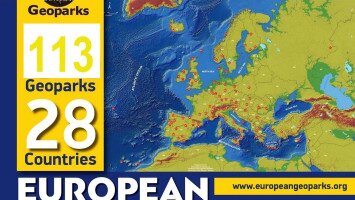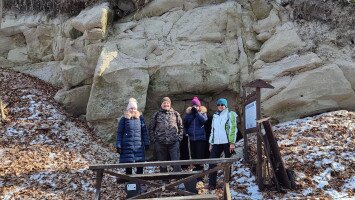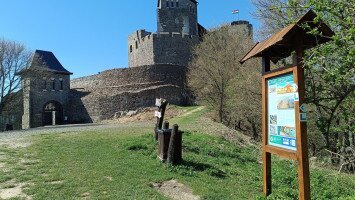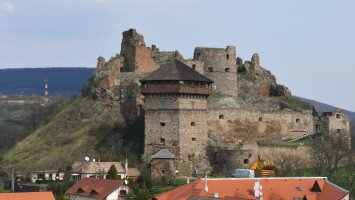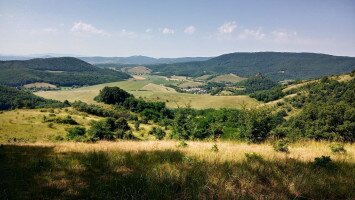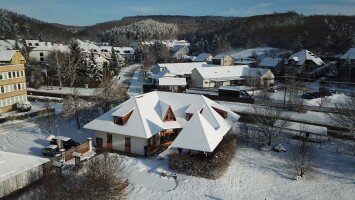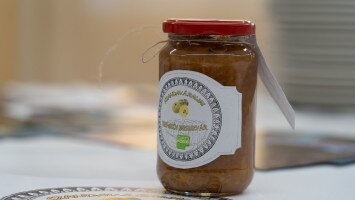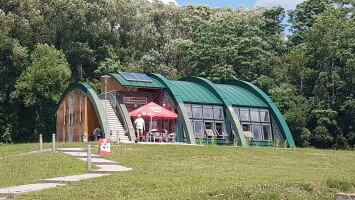
Petrified trees
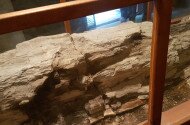
- The Prehistoric Pompeii
- Petrified trees
The 42 m long part of a giant petrified tree trunk (Pinuxylon tarnocziense, relative to sugar pines), that bridged a stream of the Borokas ravine was exposed at the beginning of the 19th century. Its discovery initiated the scientific research of the site, which began in 1836, led by Ferenc Kubinyi.
Later investigations found out that a whole forest was destroyed by the volcanism, the trees were laid on top of the paleosurface by the nearby volcanic blast. That is why most of the tree remains are embedded at the sandstone—tuff transition, on top of the plinian ash fall unit.
A detailed analysis of the petrified tree trunks revealed that the 17-18 Ma old rainforest held at least 7 coniferous, 4 deciduous and 1 palm species, including a newly identified fossil laurel holotype (Laurinoxylon mueller-stolli). (Mantzoukka D. 2016)
By studying the tree’s annual rings, scientists have discovered that the sunspot activity was different then from now. Back then the cycle covered 6-7 years, while today the sunspot cycle is 11 years. The ancient pine unfolds the past even in its sleep.
RELATED



